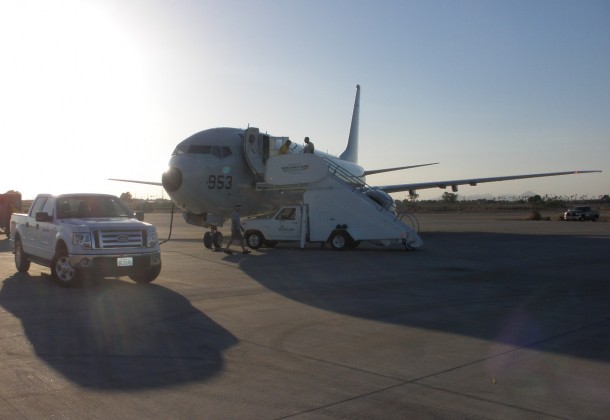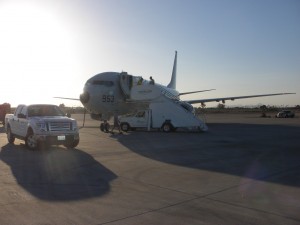Two Weeks in Hellish Heat


On the Yuma, Ariz., flight line, the P-8A T-2 test aircraft is being prepped for thermal performance tests. (Navy photo)
By PMA-290 Public Affairs
With average July high temperatures of 107 degrees Fahrenheit, Yuma is one of the hottest cities in the United States. It’s no secret why the P-8A Poseidon test team chose this location to satisfy the testing requirement for thermal response.
The P-8A T-2 test aircraft returned from its second detachment during the test program where team members conducted hot environment ground and flight tests July 7-20 in Yuma, Ariz.
“The outstanding performance of the test team resulted in a record setting pace allowing us to successfully gather the required data and return the aircraft back to NAS Patuxent River to support the next phase of testing, said Lt. Cmdr. Kristopher Carter, developmental test pilot for the P-8A.
Project officers, engineers, test conductors and maintenance crews spent 13 days testing many of the Poseidon’s systems in an unusually high-temperature climate to gather thermal performance data. Ground and flight tests were conducted on the propulsion/engine systems and the Environmental Control System.
During the flight portion of testing, the team executed nine successful test flights in eight days. The team completed the ground portion of testing one day ahead of schedule. Additional tests evaluated the P-8A Communications and Enhanced Digital Flight Control System during transit to and from Yuma.
While the collected data from the Yuma detachment is still being evaluated, the P-8A T-2 test aircraft continues required mission systems testing at Pax to include the acoustic system, Sonobuoy Launching System, Sonobuoy Positioning System, and Electro-Optical/Infrared system, all of which contribute to the P-8A’s primary mission to detect, localize, and track targets in the day or night maritime environment.
Beginning in 2013, the P-8A will replace the aging P-3C Orion, which has served the Navy in the anti-submarine mission since the 1960s.






















